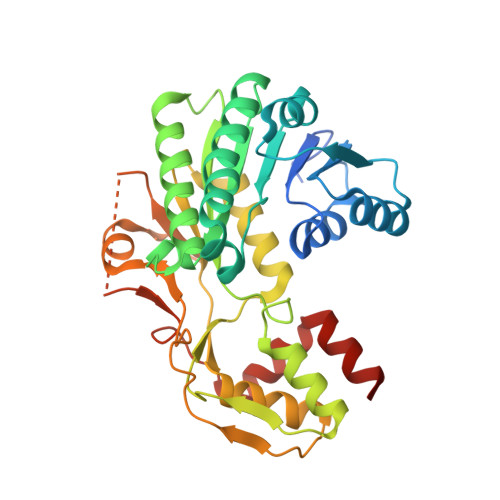Crystal structure of the capsular polysaccharide synthesizing protein CapE of Staphylococcus aureus.
Miyafusa, T., Caaveiro, J.M., Tanaka, Y., Tanner, M.E., Tsumoto, K.(2013) Biosci Rep 33: 463-474
- PubMed: 23611437
- DOI: https://doi.org/10.1042/BSR20130017
- Primary Citation of Related Structures:
3VVB, 3VVC, 3W1V - PubMed Abstract:
Enzymes synthesizing the bacterial CP (capsular polysaccharide) are attractive antimicrobial targets. However, we lack critical information about the structure and mechanism of many of them. In an effort to reduce that gap, we have determined three different crystal structures of the enzyme CapE of the human pathogen Staphylococcus aureus. The structure reveals that CapE is a member of the SDR (short-chain dehydrogenase/reductase) super-family of proteins. CapE assembles in a hexameric complex stabilized by three major contact surfaces between protein subunits. Turnover of substrate and/or coenzyme induces major conformational changes at the contact interface between protein subunits, and a displacement of the substrate-binding domain with respect to the Rossmann domain. A novel dynamic element that we called the latch is essential for remodelling of the protein-protein interface. Structural and primary sequence alignment identifies a group of SDR proteins involved in polysaccharide synthesis that share the two salient features of CapE: the mobile loop (latch) and a distinctive catalytic site (MxxxK). The relevance of these structural elements was evaluated by site-directed mutagenesis.
Organizational Affiliation:
Medical Proteomics Laboratory, Institute of Medical Science, Department of Medical Genome Sciences, School of Frontier Sciences, The University of Tokyo, Minato-ku, Tokyo 108-8639, Japan.
















